For millions of fans around the globe, PewDiePie isn’t just a YouTuber; he’s a cultural icon who has defined an era of online entertainment. Owning a piece of PewDiePie Merchandise signed by the man himself, Felix Kjellberg, represents more than just a collectible – it’s a tangible connection to countless hours of laughter, memorable moments, and the vibrant community he built. However, venturing into the world of “PewDiePie signed” items can feel daunting. The autograph market is exciting but requires careful navigation to avoid counterfeit items. This guide is here to help. We’ll cover everything from the types of signed merch that exist, how to spot genuine signatures, where to potentially find these coveted items, understanding their value, and how to care for them once they’re yours. Let’s dive into the quest for authentic PewDiePie signed collectibles!
Exploring the World of Signed PewDiePie Collectibles
Before zeroing in on a specific signed poster or t-shirt, it’s helpful to understand the landscape of PewDiePie signed merchandise. Over his extensive career, various items have potentially received his signature, ranging from officially released limited editions to perhaps more unique, one-off pieces. Grasping the different categories and the general appeal behind owning such an item is the crucial first step for any prospective collector or buyer. This knowledge will empower you to make more informed decisions as you explore the possibilities.

Common Types of Signed Merchandise (Posters, Apparel, Books, etc.)
Understanding what kinds of items might realistically carry an authentic PewDiePie signature helps narrow your search. While opportunities have been relatively scarce compared to some celebrities, certain categories are more likely than others.
Here’s a look at the common types of merchandise where you might find a PewDiePie signature:
- Posters: These are often fan favorites. Signed posters might have originated from specific limited merchandise drops, promotional events (though rare), or possibly older conventions PewDiePie attended earlier in his career. Their visual appeal makes them popular display pieces.
- Apparel: Think T-shirts and hoodies, cornerstone items in the general PewDiePie Merch Store offerings, particularly from official lines like Tsuki Market or past collaborations. Signed apparel usually surfaced during highly limited, specific release windows, making them quite sought after.
- Books: The most prominent example is PewDiePie’s book, “This Book Loves You.” Special signed editions were made available during its initial release, offering fans a direct way to own an officially signed item.
- Gaming Accessories: While less common for signed items, it’s conceivable that special edition peripherals (like headsets, keyboards, or even the iconic PewDiePie chair from collaborations) might have been signed as part of a contest, giveaway, or extremely limited promotion.
- Other Ephemera: This category includes miscellaneous items like photographs, event passes (from early career appearances), or other unique objects signed under special circumstances. These are often the hardest to find and authenticate.
Knowing these categories helps you focus your search efforts and understand the context in which a signed item might have originated.
Understanding Limited Edition vs. One-Off Signed Items
Not all signed items are created equal in terms of their origin and availability. It’s important to distinguish between “Limited Edition” and “One-Off” signed pieces. A Limited Edition item typically refers to merchandise released officially through PewDiePie’s channels (like Tsuki Market) in a specific, predetermined, and often numbered quantity. For example, a drop might include “100 signed posters” or “50 signed hoodies.” These usually come directly from the official source and often sell out almost instantly. Their provenance is generally clearer, tied directly to the official sale.
Conversely, a One-Off signed item is unique. It wasn’t part of a mass-produced signed run. This could happen in various ways: perhaps an item signed in person at a meet-and-greet (extremely rare for PewDiePie in recent years), a gift to a collaborator, a prize in a specific contest, or an item signed for charity. These items are inherently scarcer, but their authenticity often relies heavily on strong provenance, like photographic proof of the signing, which can be hard to come by. Understanding this distinction is key when evaluating rarity and potential value.
The Significance and Appeal of Owning a Signed Piece
Why is there such interest in finding “PewDiePie signed” collectibles? The appeal goes beyond mere ownership. For dedicated fans, possessing an item personally autographed by Felix provides a powerful sense of connection to a creator they’ve followed, often for years. It transforms a piece of merchandise from a simple product into a personal artifact, a representation of their fandom and appreciation.
Furthermore, there’s the undeniable allure of rarity and uniqueness. Signed items, especially limited editions or verifiable one-offs, are scarce by nature. Owning one means possessing something few others have, tapping into the core desire of collecting. While potential appreciation in value is sometimes mentioned, it’s highly speculative and shouldn’t be the primary motivation. The true significance often lies in the emotional value and the pride of owning a tangible piece linked directly to one of the internet’s most influential figures. It’s a memento of a significant cultural phenomenon.
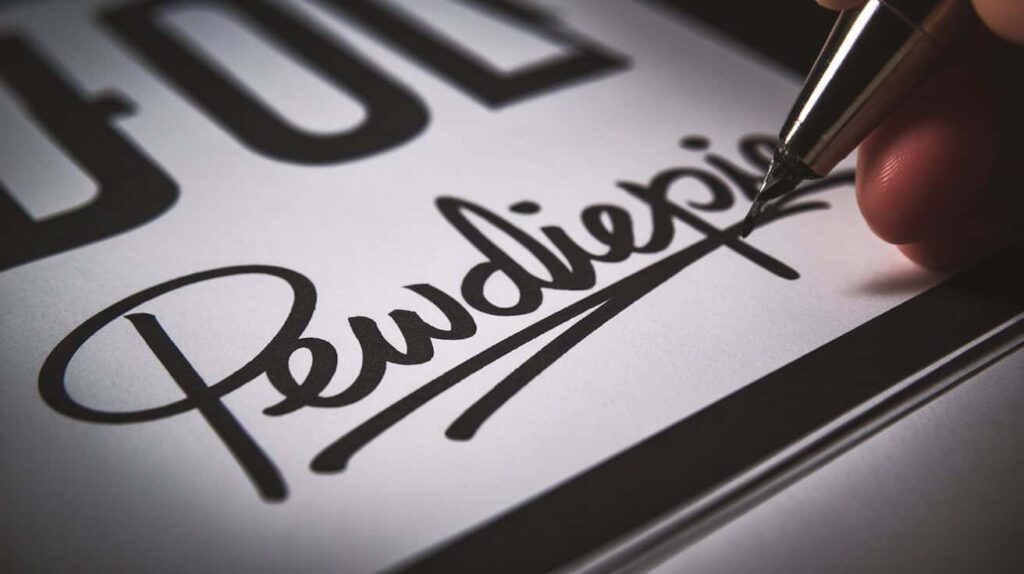
Identifying Genuine PewDiePie Signatures: Authentication Essentials
In the quest for signed memorabilia, nothing is more crucial than authentication. The market unfortunately attracts forgeries, and acquiring a fake “PewDiePie signed” item is a disappointing and potentially costly mistake. Protecting yourself as a collector or buyer means understanding the basics of signature verification. This involves familiarizing yourself with the characteristics of his known genuine signature, learning to spot common red flags of fakes, and recognizing the critical role of provenance – the item’s documented history. Let’s delve into these essential elements.
Key Characteristics of PewDiePie’s Authentic Autograph Style
Analyzing any signature requires careful comparison with known genuine examples. While providing a definitive forensic analysis here is impossible, we can discuss general characteristics to look for when comparing against verified autographs. Disclaimer: Signature analysis is complex. Variations exist, and styles can change. This information is for guidance only and should be used alongside comparison with multiple known genuine examples obtained from reliable sources (e.g., documented official Tsuki Market releases, verified charity auction items).
Based on publicly available examples often discussed by collectors, some general observations might include:
- Flow and Speed: Genuine autographs typically show a natural flow and confidence, signed relatively quickly without the slow, drawn-out appearance often seen in forgeries.
- Letter Formation: Pay attention to how specific letters are formed, especially the ‘P’, ‘D’, and ‘P’ in “PewDiePie,” or the ‘F’ and ‘K’ if he signs with his real name (which seems less common on merchandise). Look for consistency in slant, loops, and connections between letters across known genuine examples.
- Baseline: Does the signature tend to stay on a relatively consistent baseline, or does it trail upwards or downwards?
- Ending Strokes: Observe how the signature typically ends – with a flourish, a simple line, or an abrupt stop?
Again, these are just potential points of comparison. Always seek out clear images of unquestionably authentic signatures from official releases or highly reputable sources for your reference.
Evolution of His Signature Over Time (If Applicable)
PewDiePie’s career spans over a decade, a period during which many individuals’ signatures naturally evolve. It’s plausible that his autograph from, say, 2013 might look noticeably different from one signed in 2023. Signatures can simplify, become more stylized, or change slightly in size or slant over years.
Why does this matter? Because an older signature that looks different from recent examples isn’t automatically fake. Context is key. If you’re evaluating an item claimed to be from an earlier period, you need to compare it to known genuine examples from that same era. Information on the specific evolution of PewDiePie’s signature might be scarce or difficult to confirm definitively without a large pool of dated, verified examples. Acknowledge this uncertainty – if you see variations, try to determine if they align with a potential timeframe or if they deviate significantly from all known genuine styles.
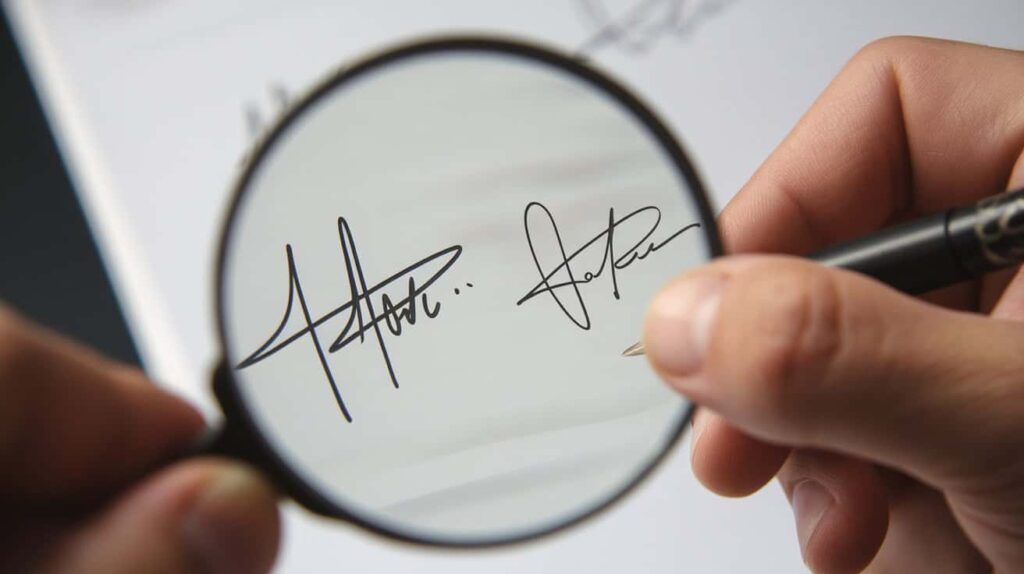
Spotting Fakes: Common Red Flags in Forged Signatures
While knowing the genuine article is crucial, recognizing the signs of a forgery is equally important. Forgers often make common mistakes. Keep an eye out for these red flags when examining a potential “PewDiePie signed” item:
To help you identify potential forgeries, here are some common indicators to watch out for:
- Slow or Hesitant Appearance: Forged signatures often look slowly drawn, shaky, or lack the fluid motion of a natural autograph. Look for unnatural lifts or blunt starts/stops in the ink.
- Unnatural Uniformity (Autopen/Printed): Signatures created by an autopen machine or simply printed onto an item often exhibit perfect uniformity in pressure and stroke width. Multiple identical signatures across different items are a huge red flag.
- Incorrect Letter Formations: Does the signature contain letters formed in a way that drastically differs from known genuine examples? Consistent deviations are suspicious.
- Suspiciously Perfect Placement: Is the signature placed too perfectly, perhaps avoiding any complex background elements on a poster? While possible, sometimes this indicates careful printing rather than a quick signing.
- Ink Issues: Look for signs of feathering (if the ink bleeds into the paper unnaturally) or inconsistent ink flow that doesn’t match the pen type likely used.
- Lack of Known Characteristics: If the signature is missing key elements consistently seen in genuine examples (specific loops, flourishes, connections), be cautious.
These red flags, especially when multiple are present, should prompt serious skepticism about the signature’s authenticity.
The Importance of Provenance: Documenting an Item’s History
Beyond analyzing the signature itself, provenance is paramount. Provenance refers to the documented history of an item – its origin and chain of ownership. It’s the evidence that links the signature on the item back to PewDiePie himself. Strong provenance significantly boosts confidence in authenticity and enhances an item’s value.
What constitutes strong provenance?
- Original Purchase Receipt: A receipt directly from an official source (like Tsuki Market) for a specific, advertised signed item drop is excellent provenance.
- Certificate of Authenticity (COA) from the Official Source: If Tsuki Market or another official entity issued a COA at the time of the original sale, that carries significant weight.
- Photographic/Video Proof: A clear photo or video showing PewDiePie actually signing the specific item in question. This is often rare but provides compelling evidence if available.
- Documentation from Reputable Third-Party Authenticators (TPAs): Certification from established services like PSA/DNA, JSA, or Beckett (more on this later).
Conversely, weak provenance includes vague stories (“I got it from a friend,” “found it at a market”), unverifiable claims, or COAs from unknown sellers. Always scrutinize the provenance offered for any signed item. The stronger and more verifiable the history, the better.
Verifying Authenticity: COAs and Professional Services
While examining the signature and provenance yourself is a vital first step, sometimes you need external validation, especially when considering a significant purchase. This is where Certificates of Authenticity (COAs) and professional Third-Party Authentication (TPA) services come into play. These tools can offer an additional layer of assurance, helping you navigate the market with greater confidence. Let’s explore what they are and when to use them.
What is a Certificate of Authenticity (COA)?
A Certificate of Authenticity (COA) is essentially a document issued by a seller or organization claiming that the signature on an item is genuine. It often includes details about the item and sometimes features a serial number or hologram. COAs can be issued by various parties: the original seller (like PewDiePie’s official store during a drop), the celebrity’s management or company, or independent third-party authenticators.
However, and this is critically important, the value and reliability of a COA depend entirely on the reputation and credibility of the issuer. A COA printed by an unknown seller on eBay holds virtually no weight in the authentication world. It’s merely that seller’s personal guarantee, which is easily faked. Always question who issued the COA before placing any trust in it.
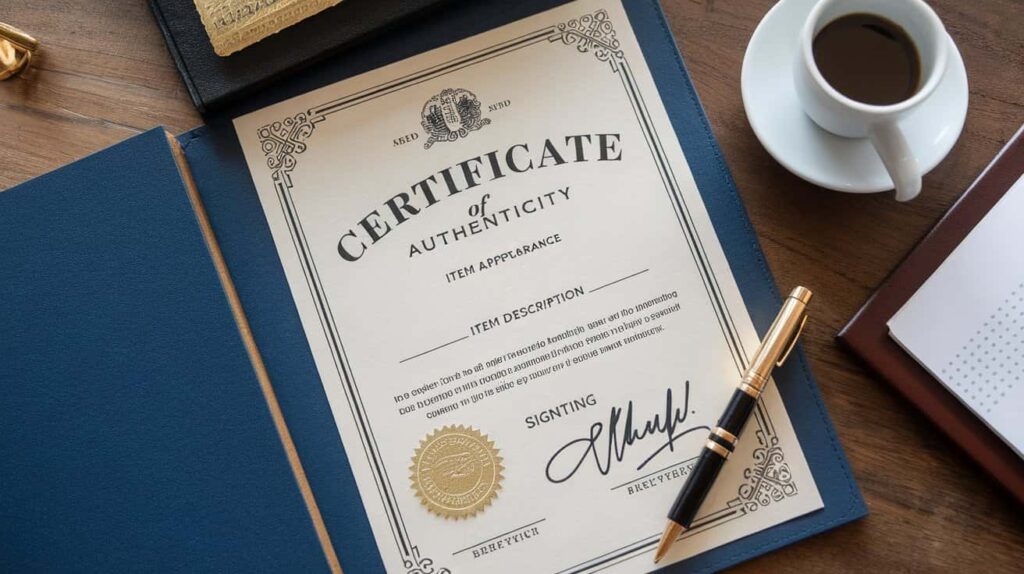
Reputable Sources for COAs for PewDiePie Memorabilia
When evaluating a COA associated with a “PewDiePie signed” item, the source is everything.
- Official Source COAs: If PewDiePie’s official merchandise store (like Tsuki Market) ever issued COAs directly accompanying a specific signed item release, these would generally be considered highly credible, provided they can be verified as originating from that official sale.
- Reputable Third-Party Authenticators (TPAs): The gold standard in the broader autograph market comes from established, widely respected TPA services. Companies like PSA/DNA (Professional Sports Authenticator), JSA (James Spence Authentication), and BAS (Beckett Authentication Services) employ experts who examine autographs and issue COAs (often with tamper-proof stickers and online database verification) if deemed authentic. It’s essential to verify if these services regularly authenticate signatures of modern internet personalities like PewDiePie, as their expertise might be more focused on sports or historical figures. Check their websites for service scope.
Strong Warning: Be extremely wary of generic COAs included by individual sellers on platforms like eBay, especially if the seller themselves is the issuer. These are often worthless. Similarly, avoid COAs from unknown or fly-by-night “authentication” companies. Stick to COAs from the original official source or top-tier, recognized TPAs.
When to Consider Third-Party Authentication Services
Deciding whether to submit an item for professional third-party authentication depends on several factors. It’s often a worthwhile investment in these scenarios:
Consider using a reputable TPA service like PSA/DNA, JSA, or BAS (after confirming they handle this type of memorabilia) when:
- Dealing with High-Value Items: If a signed PewDiePie item commands a significant price, professional authentication protects your investment and adds considerable resale value.
- Provenance is Weak or Questionable: If the item’s history is unclear, lacks strong documentation, or relies on hearsay, TPA can provide an expert opinion on the signature itself.
- Purchasing on the Secondary Market: Before finalizing a major purchase from a source other than the official store (e.g., eBay, collector forums), having it authenticated offers crucial peace of mind.
- Selling a Signed Item: A certificate from a top TPA significantly increases buyer confidence and typically allows you to command a higher price.
The process usually involves submitting the item (either physically or sometimes via high-quality scans for preliminary review), paying a fee based on the item’s potential value and desired turnaround time, and waiting for the experts’ assessment. While it involves cost and effort, TPA is often the most definitive way to establish authenticity in the secondary market.
Where to Find Authentic PewDiePie Signed Items for Your Collection
Now for the big question: where can you actually look for authentic “PewDiePie signed” merchandise? The hunt requires patience and diligence. Officially released signed items are typically rare and appear sporadically, often selling out very quickly. It’s helpful to differentiate between primary market sources (official channels) and secondary markets (resale platforms), each with its own advantages and risks.
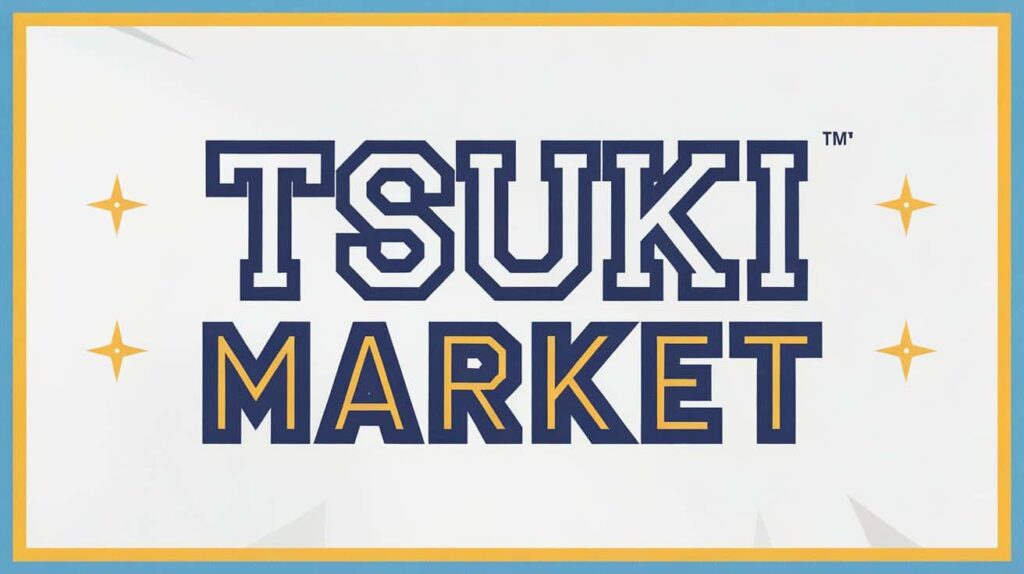
Official Channels: Past & Present (Tsuki Market, Specific Drops)
The most reliable way to obtain a genuinely signed PewDiePie item is directly from the source during an official release. Historically, this has primarily meant:
- Tsuki Market: PewDiePie’s official merchandise brand, co-founded with Marzia Kjellberg. On rare occasions, Tsuki might announce extremely limited drops that include signed items (e.g., posters, apparel). These events are typically announced shortly beforehand and sell out within minutes, if not seconds.
- Past Collaborations/Book Releases: The signed edition of “This Book Loves You” was an example of an official release through publishing channels. Past brand collaborations, such as those creating the popular PewDiePie x RhinoShield phone cases or distinct PewDiePie G Fuel shakers, might have also involved signed giveaways or limited items, though these are harder to track retrospectively and finding signed versions is exceptionally rare.
Key Takeaway: Opportunities to buy directly from official channels are infrequent and highly competitive. The best strategy is to actively follow PewDiePie’s official social media accounts (YouTube, Twitter, Instagram), the official Tsuki Market website ([tsuki.market]), and their social media channels. While future signed drops aren’t guaranteed, this is where announcements would likely happen. For general updates and potential news aggregation on merch drops, fan communities or dedicated hubs like the main PewDiePie Merch site here might also track such information (explore our official store guide too), but always verify through official Tsuki Market or PewDiePie social channels.. Buying directly during an official drop offers the highest assurance of authenticity.
Reputable Secondary Marketplaces (eBay, Collector Forums – With Caveats)
Since official signed drops are rare, many collectors turn to the secondary market – platforms where individuals resell items they previously acquired. The most common platform is eBay, but dedicated collector forums or subreddits (if active and relevant communities exist) might also see listings. However, navigating these waters requires extreme caution.
Here are the crucial caveats you MUST consider when browsing secondary marketplaces:
- High Risk of Fakes: This is the biggest danger. Forgeries and misrepresented items are unfortunately common. Assume nothing is authentic without rigorous scrutiny.
- Vet the Seller Thoroughly: Don’t just look at the item; investigate the seller. Check their feedback score, read reviews (positive and negative), look at their sales history, and see if they specialize in memorabilia or sell random goods. Reputable sellers often have a track record.
- Scrutinize Listings Meticulously: Look for multiple, clear, high-resolution photos of the item and the signature from various angles. Read the description carefully – does it provide specific details about provenance? Are the claims verifiable? Avoid listings with blurry photos, stock images, or vague descriptions.
- Beware of “Too Good to Be True” Prices: If a supposedly rare signed item is listed for a surprisingly low price, it’s almost certainly fake or misrepresented.
- Understand Buyer Protection: Familiarize yourself with the platform’s buyer protection policies (like the eBay Money Back Guarantee). Understand the process for filing a dispute if an item turns out not to be authentic.
- Prioritize TPA Certification: Listings for items already authenticated by reputable TPAs (PSA/DNA, JSA, BAS) offer significantly more security, though they usually command higher prices. Verify the certification number on the TPA’s website if possible.
Approach the secondary market with healthy skepticism and do your homework on both the item and the seller.
Auction Houses Specializing in Pop Culture Memorabilia
For potentially higher-end or historically significant signed items (perhaps very early career autographs or items tied to major milestones), established auction houses could be a source. Houses like Heritage Auctions, Goldin, or others specializing in pop culture or entertainment memorabilia might occasionally feature items related to major YouTubers.
However, keep in mind:
- PewDiePie memorabilia might currently be less common in these venues compared to traditional celebrities or sports stars.
- Prices at auction can be high, and you’ll typically pay a buyer’s premium (an additional percentage on top of the hammer price).
- Auction houses usually perform their own due diligence regarding authenticity and provide detailed descriptions and provenance information, which adds a layer of trust compared to open marketplaces.
This option is generally more relevant for serious collectors with significant budgets, looking for particularly rare or well-documented pieces.
Evaluating Sellers: Tips for Safer Online Purchases
Whether on eBay or other platforms, evaluating the seller is as important as evaluating the item itself. Protecting yourself involves careful vetting.
To help you make safer purchases on secondary markets, follow these actionable tips:
- Check Ratings and Reviews: Look for sellers with a high positive feedback percentage and a substantial number of completed transactions. Read comments from previous buyers.
- Examine Photos Critically: Insist on numerous clear, high-resolution photos showing the item, the signature, and any accompanying documentation (like COAs) from multiple angles. Be wary of sellers using stock photos or blurry images.
- Read Descriptions Carefully: Does the seller provide detailed information about the item’s origin (provenance)? Are their claims specific and plausible? Vague descriptions are a red flag.
- Ask Questions: Don’t hesitate to contact the seller to ask specific questions about the item’s history, the signing circumstances, or request additional photos. Reputable sellers are usually happy to provide more information.
- Compare the Signature: Use your knowledge of genuine examples and common forgery red flags to scrutinize the signature shown in the listing.
- Be Skeptical: Maintain a healthy level of skepticism. If anything feels “off” about the listing or the seller’s communication, it’s often best to walk away.
- Prefer Sellers Offering Returns: While not always feasible for collectibles, sellers who offer a reasonable return policy provide an extra layer of security.
- Understand Platform Policies: Know how the platform’s dispute resolution process works before you buy.
Taking these steps significantly reduces your risk when venturing into the secondary market for signed collectibles.
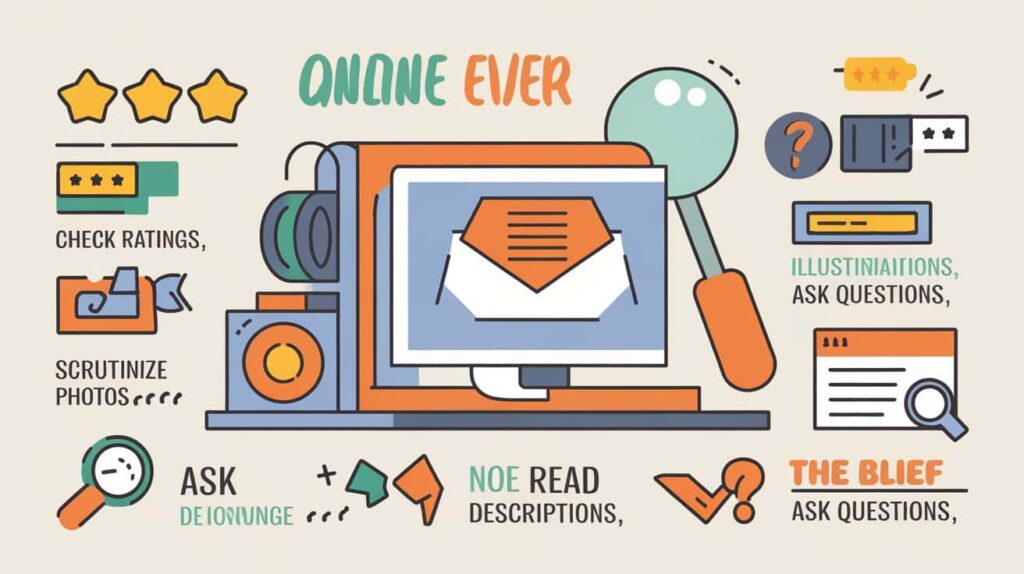
Understanding the Value and Pricing of Signed PewDiePie Merch
Naturally, anyone investigating “PewDiePie signed” items will wonder about their value. “What is it worth?” and “What should I expect to pay?” are common questions. It’s important to understand that the value of signed memorabilia isn’t fixed; it fluctuates based on market demand, item specifics, and perceived authenticity. Several key factors influence the market price, and researching actual sales data is crucial for getting a realistic idea.
Key Factors Influencing Market Value (Item Type, Rarity, Condition, Provenance)
The price tag on a signed PewDiePie collectible is determined by a combination of factors. Understanding these drivers is essential for both buyers and potential sellers.
Here are the primary elements that influence the market value of signed PewDiePie merchandise:
- Item Signed: The nature of the object itself matters. A signed copy of his book might have a different value proposition than a signed limited edition poster or a unique piece of apparel. Items intrinsically linked to significant moments or releases might command more interest.
- Rarity: How many were signed? Is it part of a numbered limited edition (e.g., #10 of 50)? Is the signature itself rare on this type of item? Genuine scarcity, especially for officially released items with low edition numbers, drives value up.
- Condition: The physical state of both the item and the signature is critical. Items in mint or near-mint condition are worth more than damaged, faded, or creased ones. Likewise, a bold, clear, well-placed signature is more desirable than one that is smudged, faded, or runs off the edge.
- Authenticity & Provenance: This is arguably the most significant factor. An item with ironclad proof of authenticity (e.g., an official COA from Tsuki, reputable TPA certification like PSA/DNA or JSA) will command a substantial premium over an item with questionable or no provenance. Unauthenticated items carry high risk and thus lower value.
- Market Demand: Like any collectible, value is influenced by current interest. PewDiePie’s enduring popularity keeps demand relatively high, but specific items might become more or less sought after depending on trends or milestones.
- Signature Quality & Placement: Beyond just being authentic, the aesthetic appeal of the signature matters. Is it well-placed on the item? Is it a visually appealing example of his autograph? A messy or poorly placed signature can detract from the value.
Considering all these factors together provides a clearer picture of why certain signed items are priced higher than others.
Researching Recent Sales Data for Price Benchmarks
Asking prices, especially on platforms like eBay, can be misleading. Sellers can ask for any amount; what truly matters is what buyers are actually willing to pay. Therefore, researching recent, completed sales data is crucial for establishing realistic price benchmarks.
Here’s how to do your research:
- Use eBay’s “Sold Items” Filter: When searching on eBay, make sure to filter results to show only “Sold Items” or “Completed Items.” This reveals actual transaction prices, not just wishful asking prices. Look for items comparable to the one you’re interested in.
- Check Auction House Results: If you’re looking at higher-end items, check the past auction results databases of reputable houses like Heritage Auctions (if they have relevant sales).
- Consult Collector Communities (Cautiously): Sometimes, dedicated fan forums or collector groups discuss recent sales. However, treat this information cautiously, as prices mentioned might be anecdotal or inflated. Always prioritize verifiable sales data.
When comparing, be sure to match items as closely as possible based on the factors mentioned above: item type, rarity (if known), condition, and especially the level of authentication/provenance.
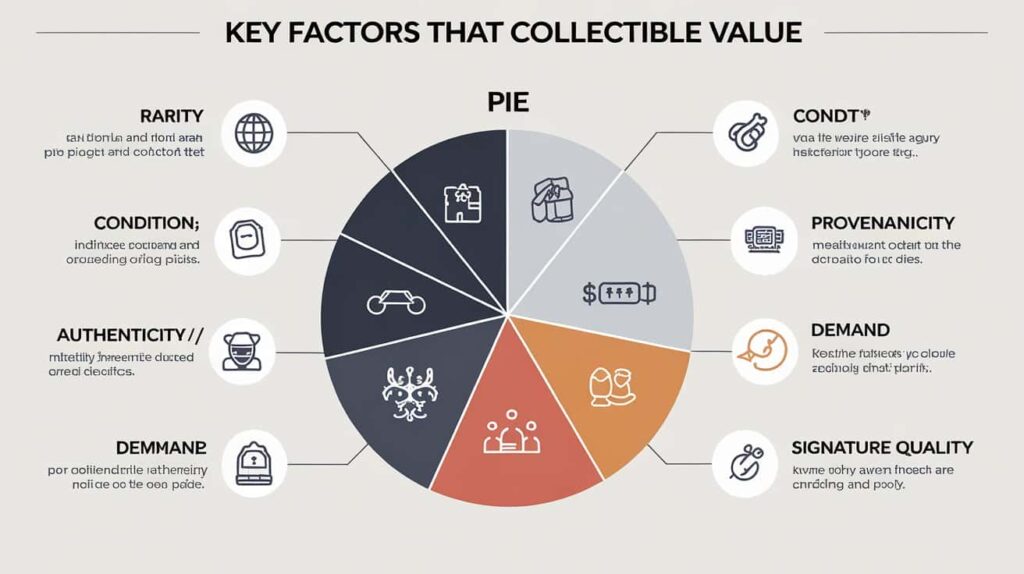
Typical Price Ranges for Different Signed Collectibles
Providing exact price ranges for “PewDiePie signed” items is challenging due to market fluctuations and the variability of the factors discussed. However, we can offer some very general, illustrative examples based on observed market trends for similar types of items.
IMPORTANT DISCLAIMER: These are rough estimates for illustrative purposes only and can change rapidly. Actual prices depend heavily on specific item rarity, condition, market demand, and, most importantly, verifiable proof of authenticity. This is not financial advice.
- Signed “This Book Loves You”: Copies with strong provenance (e.g., clearly from the initial signed release) might potentially range from the low-to-mid hundreds of dollars, depending heavily on condition and proof.
- Officially Released Signed Posters (e.g., from Tsuki): If authenticated and in excellent condition, these limited items could potentially fetch anywhere from several hundred to potentially over a thousand dollars, especially for highly sought-after designs or very low edition numbers.
- Signed Apparel (Limited Drops): Similar to posters, authenticated signed clothing from official limited runs could fall within the mid-to-high hundreds or potentially higher, based on rarity and condition.
- Items with Weak/No Provenance: Items lacking solid proof of authenticity are significantly riskier and thus generally worth much less, often reflecting only the value of the unsigned item itself, or slightly more if a buyer is willing to gamble.
Again, treat these as highly generalized examples. Always conduct your own research using recent sales data for comparable items with similar levels of authentication.
Investment Potential vs. Personal Collection Value
Many people wonder if signed PewDiePie merch is a good investment. While some collectibles do appreciate significantly over time, approaching it purely as a financial investment requires caution. The autograph market can be volatile, authentication costs money, fakes pose a constant risk, and future demand is never guaranteed.
It’s often healthier to prioritize the personal collection value. If you’re a genuine fan, the joy and pride of owning an authentic signed item offer a guaranteed return that financial markets cannot promise. Think of it primarily as acquiring something you love and will cherish. If it happens to increase in monetary value over time, consider that a potential bonus rather than the main goal. Focusing on items you connect with personally often leads to a more satisfying collecting experience.
Caring for Your Signed PewDiePie Collectibles
Congratulations! You’ve successfully acquired an authentic signed PewDiePie item. Now, the responsibility shifts to preserving its condition and value for years to come. Proper storage and display are essential to prevent damage, particularly fading of the signature, which is often the most vulnerable element.
-
Using acid-free, archival-quality materials is crucial for long-term preservation.
Best Practices for Storage to Prevent Damage (Light, Humidity)
Environmental factors are the biggest enemies of collectibles, especially signed paper items and apparel. Following best practices for storage is crucial.
Here are key tips for safely storing your signed PewDiePie merchandise:
- Avoid Light Exposure: Keep items out of direct sunlight and strong artificial light (especially fluorescent). UV rays are the primary cause of fading for both the item and the signature ink. Dark storage is ideal when not displaying.
- Control Climate: Store items in a cool, dry environment with stable temperature and humidity. Attics, basements, or garages are often poor choices due to fluctuations. Aim for typical indoor living space conditions.
- Use Acid-Free Materials: Always use archival-quality, acid-free materials for storage. This includes folders, backing boards, sleeves (like Mylar/polyester), matting in frames, and storage boxes. Regular paper and cardboard contain acids that can yellow and degrade items over time.
- Support Items Properly: Store flat items like posters flat, ideally in sleeves with backing boards, or rolled loosely in archival tubes if necessary (though flat is preferred). Prevent creasing, bending, or undue pressure on apparel.
These simple steps go a long way in preventing irreversible damage.
Proper Display Methods to Showcase and Protect Your Item
You’ll likely want to display your treasured collectible, but doing so safely requires thought. Balancing visibility with protection is key.
Consider these safe display options:
- UV-Protective Framing: For flat items like posters or photos, use frames fitted with UV-protective glass or acrylic. This filters out the most harmful light rays. Ensure all matting and backing materials within the frame are also acid-free and archival quality.
- Archival Sleeves/Binders: Items can be placed in acid-free, transparent sleeves and kept in binders for occasional viewing while offering good protection during storage.
- Display Cases: For 3D objects like signed accessories or perhaps carefully folded apparel, acrylic display cases can offer physical protection and dust cover. Look for options with UV protection if the item will be exposed to ambient light.
Even with protective measures, it’s still wise to avoid displaying signed items in areas with constant, direct light. Rotate items on display periodically if you have multiple pieces.
Protecting Signatures from Fading Over Time
The signature itself is often the most sensitive part of your collectible. Ink, regardless of type (Sharpie, pen, etc.), will inevitably fade over time when exposed to light. UV radiation breaks down the chemical compounds in the ink, causing it to lighten and potentially disappear.
The single most effective way to protect a signature from fading is to minimize its exposure to light, especially UV light. Dark storage is the best long-term preservation strategy. When displaying, always use UV-protective glazing and position the item away from direct sunlight or intense artificial light sources. Additionally, handle the signed area as little as possible, and always with clean, dry hands, as oils and moisture from skin can potentially damage the ink or paper over time. There’s no magic way to completely stop fading if exposed to light, so prevention through careful storage and display is critical.
Quick Answers: Common Questions About PewDiePie Signatures
To round out our guide, let’s address some frequently asked questions about PewDiePie signed merchandise. This section provides quick answers to common queries, summarizing key points or tackling specific scenarios you might be wondering about.
Is PewDiePie Currently Offering Signed Merchandise Officially?
As of recent knowledge, PewDiePie does not regularly offer signed merchandise through official channels like Tsuki Market. Signed items have typically been released only during very specific, highly limited-edition drops that are announced shortly beforehand and sell out extremely quickly. There is no ongoing program or guarantee of future signed releases. The best approach is to diligently follow PewDiePie’s and Tsuki Market’s official social media accounts and websites for any potential future announcements, but manage expectations – such opportunities are rare. Keep an eye on fan communities or resources like this PewDiePie Merch website as well, as we often aggregate news, but always confirm announcements via official sources.
What Defines ‘Provenance’ in Collectibles?
Provenance is a crucial term in the collectibles world. It refers to the documented history of an item’s ownership and origin, tracing it back as close to the source as possible. For a signed item, strong provenance ideally links the signature directly to the signer (PewDiePie). Examples include the original purchase receipt from an official signed merchandise drop, a COA issued by the official source at the time of sale, clear photographic or video evidence of PewDiePie signing that specific item, or certification from a highly reputable third-party authenticator (like PSA/DNA, JSA, BAS). Weak provenance involves unverifiable stories or COAs from unknown sources.
How Does a Signed Poster Compare in Rarity to a Signed Book?
Comparing the rarity of a signed poster versus a signed book (like “This Book Loves You”) depends entirely on the specific release context. The signed edition of “This Book Loves You” had a defined, albeit potentially large, print run during its initial release. Signed posters, on the other hand, might have come from various sources over the years – perhaps multiple small, official Tsuki drops with different edition sizes, or maybe even rarer items from much earlier in his career. Therefore, a specific signed poster release limited to only 50 copies would be rarer than the general signed book edition. Conversely, if thousands of signed books were released, a poster from an edition of 200 might be considered rarer in that comparison. Rarity isn’t just about item type but about the specific circumstances and quantity of its signing and release.
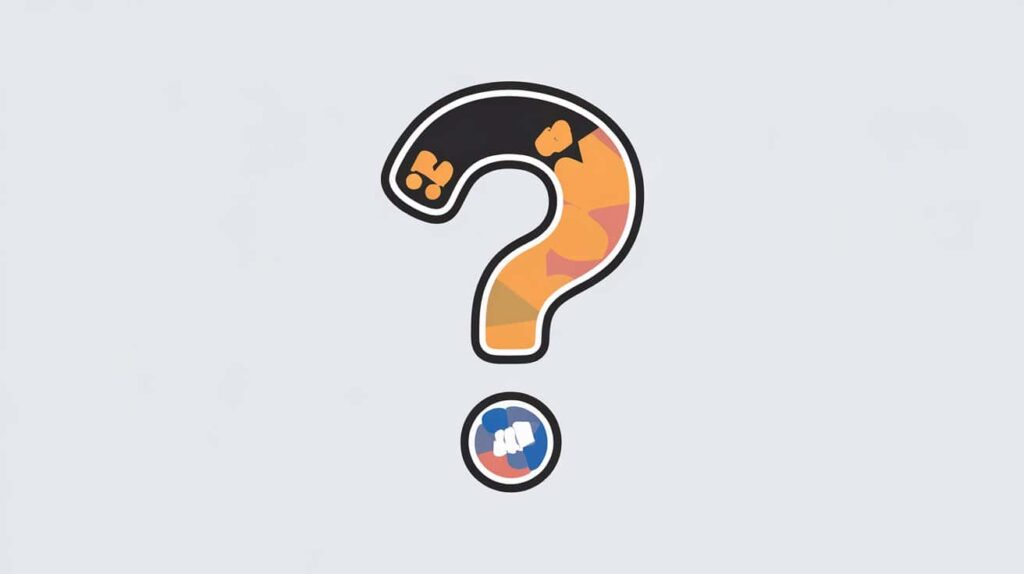
Are Signatures Obtained In-Person More Valuable than Official Releases?
There’s no simple “yes” or “no” answer; value depends heavily on context and proof. In-person signatures (obtained directly from PewDiePie, e.g., at a hypothetical meet-and-greet) can be highly valued, especially if accompanied by irrefutable proof like a clear photo or video of him signing that exact item. They offer a unique personal story element (“I was there”). However, they often lack the easily verifiable ‘official’ status of a numbered edition run and require rigorous authentication scrutiny, as proof can be faked or misleading.
Official releases (like a numbered, signed poster drop from Tsuki Market) typically have stronger, easier-to-verify provenance tied to the original sale. They are part of a recognized set, which appeals to some collectors. Ultimately, the market value depends on the specific item, the strength and type of proof, the condition, rarity, and buyer preference. Neither type is automatically more valuable than the other without considering these factors.
Can I Send My Own Item to PewDiePie for Signing?
The answer to this is almost certainly No. High-profile individuals like PewDiePie receive an overwhelming volume of fan mail and requests. It is logistically impossible and often a security concern for them or their team to manage unsolicited items sent for autographs. They generally do not offer a service where fans can mail in personal items for signing. Attempting to do so is highly likely to result in your item being ignored, discarded, or returned unsigned (if return postage is provided). Focus your efforts on acquiring signed items through legitimate official releases (when available) or by carefully navigating the reputable secondary market.

Han Pham is a professional graphic designer with over 15 years of experience in branding, UI/UX, and digital illustration. She graduated from the Ho Chi Minh City University of Fine Arts in 2010 with a Bachelor’s in Graphic Design


